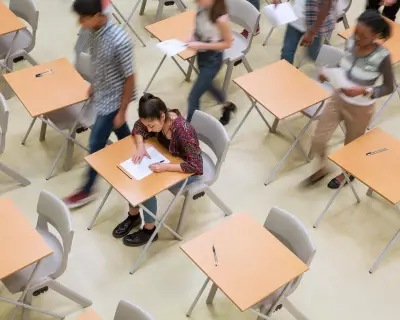
England's education system is confronting an unprecedented challenge as new data reveals a staggering 23,000 empty classrooms across the country. This surplus of school places has emerged following a significant and sustained decline in birth rates, creating both financial and logistical headaches for local authorities.
The Demographic Shift Reshaping Education
The number of surplus places in state-funded schools has surged dramatically, with official figures showing empty spaces increased by over 100,000 in just one year. This represents the largest year-on-year rise since records began, highlighting the accelerating nature of this demographic trend.
Local councils are now facing difficult decisions about how to manage this excess capacity, with options including merging year groups, reducing intake numbers, or in some cases, closing schools entirely. The situation varies significantly across regions, with some areas experiencing more severe impacts than others.
Financial Implications for Taxpayers
Maintaining empty classrooms comes at a substantial cost to taxpayers. Each unused place represents wasted resources that could be redirected to improving educational outcomes elsewhere in the system. Education experts warn that this inefficient use of funding could have long-term consequences for the quality of education provision.
The surplus places crisis raises fundamental questions about how local authorities plan for demographic changes and whether current forecasting methods adequately account for rapid population shifts.
Regional Variations and Future Projections
While the problem affects many parts of England, certain regions are experiencing more acute challenges. Urban areas with previously growing populations now find themselves with excess capacity, while rural communities face additional complications due to transportation and accessibility concerns.
Demographic analysts suggest this trend may continue for several years, meaning education leaders must develop sustainable long-term strategies rather than temporary fixes. The situation presents both challenges and opportunities for rethinking how educational spaces are utilized and funded.
As one education policy expert noted, "This isn't just about managing decline—it's about reimagining how we use educational infrastructure to serve communities in new ways."





